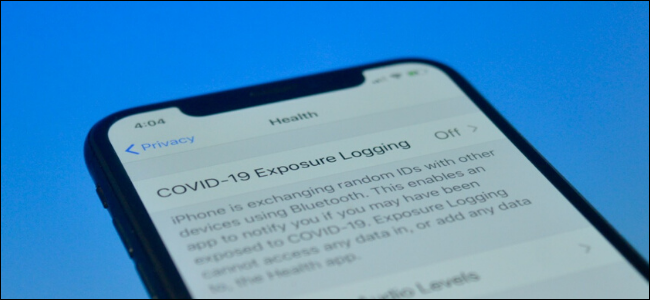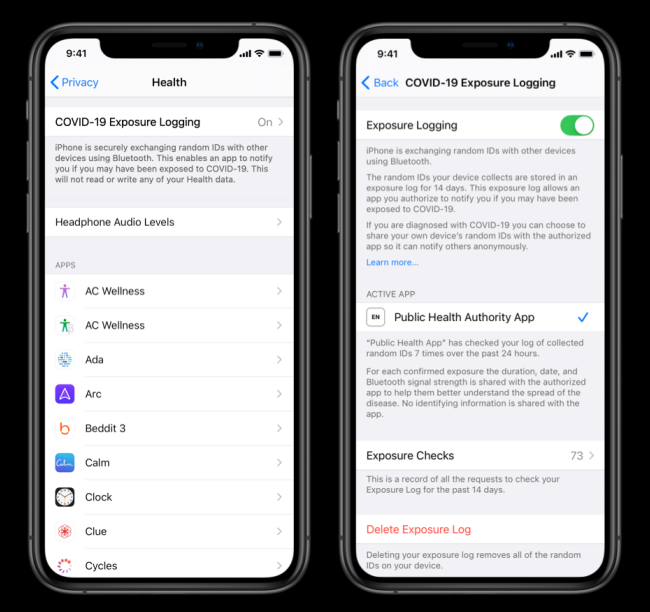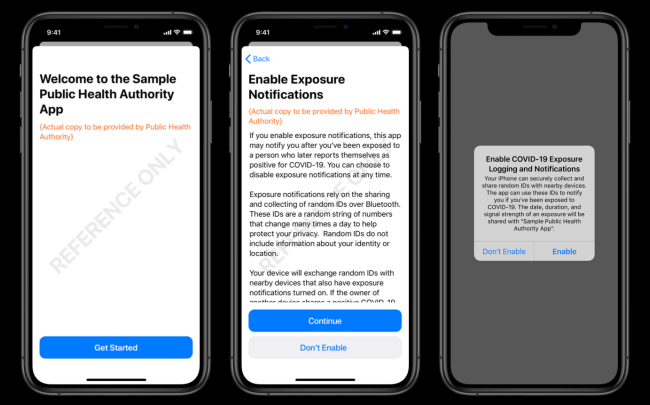Quick Links
Apple and Google have created a new digital framework for contact tracing for the COVID-19 pandemic that works around an Exposure Notifications API. Apple is rolling out an Exposure Notifications feature and API in the iOS 13.5 update for iPhone. But what exactly does it do?
Exposure Notifications API Takes Privacy-First Approach
Apple has introduced the Exposure Notifications API for public health organizations. The feature is built into iOS 13.5, but it's not enabled by default. Even after it's enabled, you'll need to use an app from public health authorities to utilize the data.
That is, until later in 2020. In phase two, Apple plans to integrate the contact tracing feature directly into iOS and the iPhone.
The API is designed with privacy and security in mind. Apple will approve of its usage individually, and it's only available for public health organizations. The entire feature, from the API to the notifications, is not mandatory. You will have to opt-in and enable the feature.
As Apple is doing this securely, it works only using Bluetooth LE beacons. The company is not going to use GPS to track your location. Apple won't be monitoring anyone's location or transmitting personal data to public health officials.
How Exposure Notifications Work
Once the user has enabled the Exposure Notification feature and opted-in to the program using a supported app, the iPhone will regularly send out a beacon via Bluetooth. This beacon includes a random Bluetooth identifier, which is a string of random numbers (not tied to any of your personal data).
These numbers change every 10 to 20 minutes to further protect your privacy.
According to Apple, at least once a day, your iPhone will download a list of keys for the verified beacons belonging to those who have been confirmed as COVID-19 positive. Your iPhone will then check your local copy of exchanged beacons against the list downloaded from the server.
If there's a match, you'll be notified about it, and your app will advise you on what to do next.
Here's a hypothetical scenario to help you understand the process:
- Let's say Jack went to the park and sat next to Jill (a couple of feet apart, of course). They both have a health app that uses the Exposure Tracking API.
- As both Jack and Jill stayed in the same place for more than 10 minutes, their smartphones exchanged Bluetooth beacons with unique keys.
- A week or so later, Jill is diagnosed with COVID-19. She opens her health app, and using documents from her healthcare provider, submits the proof that she has tested positive for COVID-19.
- Later in the day, Jack's iPhone downloads a list of all the recent beacons for people who have tested positive for COVID-19. Jack receives a notification that he was in contact with someone who has COVID-19 because of his interaction with Jill at the park.
- All this happens privately; Jack doesn't know who Jill is or when he crossed paths with someone with the virus. It will only tell Jack when the beacons were exchanged.
- Jack can then follow the app's guidance on what to do next.
- If Jack then tests positive with COVID-19, he can follow the same steps to alert the people he might have been in contact with.
How to Manage COVID-19 Exposure Notifications on iPhone
You can manage the Exposure Notifications settings from the Settings app on your iPhone. From here, you can turn the feature on or off (it's disabled by default) and see which app has access to the data.
Open the "Settings" app on your iPhone and go to Privacy > Health > COVID-19 Exposure Logging.
Here, you can tap on the toggle next to "Exposure Logging" to enable the feature. While you're at it, it might be a good idea to take some time to clean your iPhone and wash your hands.
You can see enabled apps in the "Active App" section. If you choose, you can also delete your exposure log from this screen.
As we said, to use the feature, you'll have to install an authorized app from your local health authority. This is where you'll be able to report your COVID-19 status.
When you install an authorized app, it will ask you to enable the Exposure Notifications feature. Tap on "Enable" to turn on the function.
As you can see, Apple and Google's Exposure Notifications system isn't a complete replacement for a traditional contact tracing method. But it will aid public health officials in finding people who might have been exposed to the virus in a way that doesn't share any private information.
Of course, the system is not foolproof, and it won't always work. For example, if you just walked past across someone who has COVID-19, and your iPhone didn't have the time to exchange the Bluetooth tokens, you're out of luck. It's the same if the person doesn't have a health tracking app installed.
Joanna Stern's YouTube video offers a good explainer of how Coronavirus contact tracing apps (which will be built on top of the Exposure Notifications API) will work.
You can also read our in-depth look at contact tracing to find out more about the process.



